Virtual Reality (VR) technology has come a long way since its inception, transforming the way we experience digital content. In 2024, the VR landscape is more vibrant and accessible than ever before, with a wide array of VR headsets catering to different needs and preferences. Whether you are a gaming enthusiast, a creative professional, or someone simply curious about the immersive world of VR, there is a headset out there waiting for you. In this article, we will explore the best VR headsets of 2024, making your choice easier and your VR experience unforgettable.
1. Oculus Quest 3: Where Freedom Meets VR
The Oculus Quest 3 takes wireless VR gaming to new heights. With its powerful processors and high-resolution display, this headset offers an unparalleled experience. Its inside-out tracking system means no external sensors are needed, allowing you to move freely in your virtual environment. The Quest 3 boasts an extensive game library and comfortable design, making it an excellent choice for both beginners and experienced VR users.
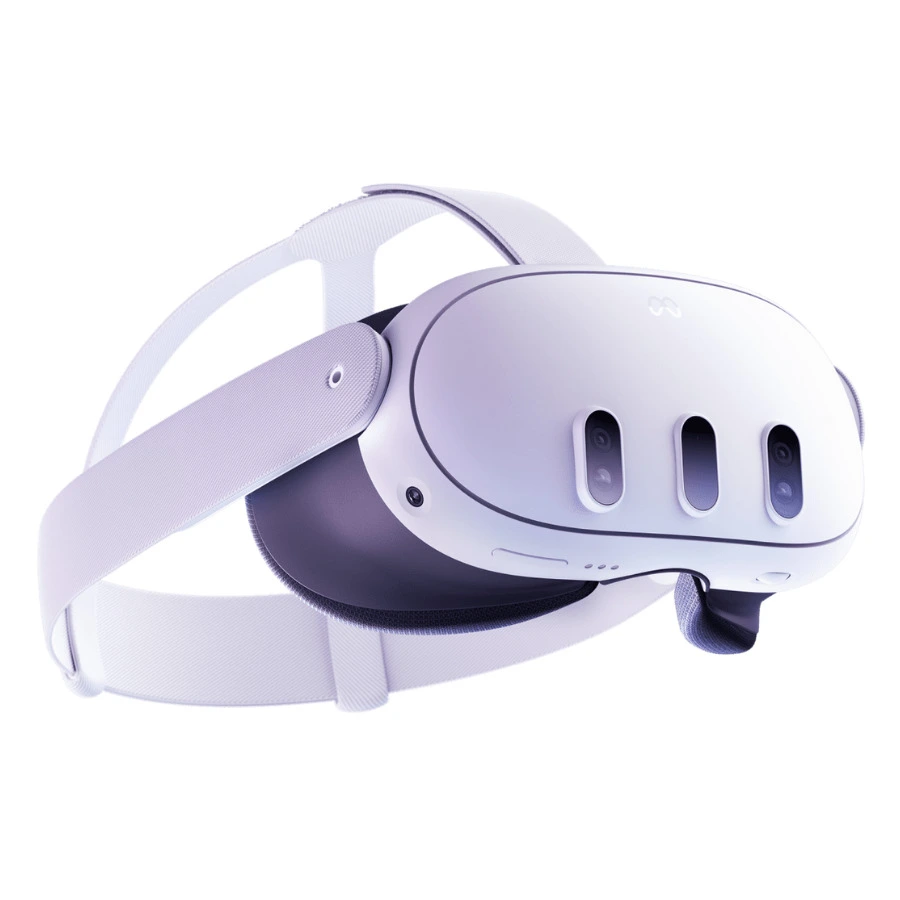
Key Features
- High-resolution display: The 4K resolution per eye offers superior visuals compared to previous Quest models.
- Standalone operation: Enjoy VR experiences without connecting to a PC.
- Inside-out tracking: Easy setup without external sensors.
- Meta Reality: This new feature allows you to blend virtual elements into your physical space for a more augmented reality experience.
- Touch Plus Controllers: New controllers with improved ergonomics and TruTouch haptics for a more natural and immersive feel.
2. PlayStation VR Pro: Unleashing Console-Based VR
For console gamers, the PlayStation VR Pro is a game-changer. Compatible with the PlayStation 5, this headset offers seamless integration with your favorite games. With upgraded visuals and a more immersive experience, PlayStation VR Pro delivers a diverse range of gaming experiences, from action-packed adventures to virtual simulations. Its ergonomic design ensures comfort during extended gaming sessions.
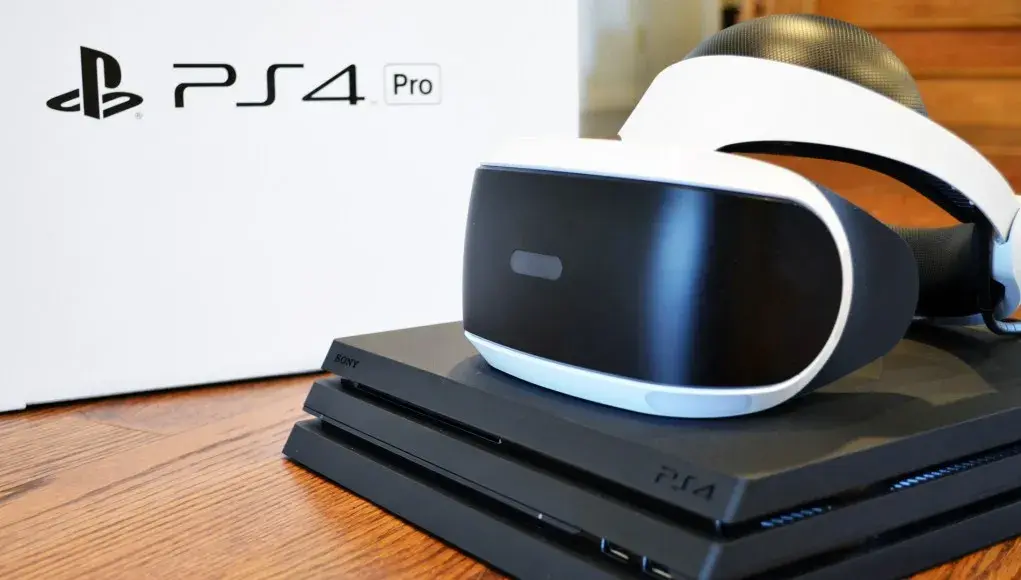
Key Features
- Higher Resolution Display: Compared to the original PSVR’s 960 x 1080 resolution per eye, a PSVR Pro might offer something closer to 4K resolution for sharper visuals and a more immersive experience.
- Increased Refresh Rate: The refresh rate of the original PSVR is 90Hz or 120Hz. A PSVR Pro could bump this up to 120Hz or even 240Hz for smoother visuals and reduced motion sickness.
- Wider Field of View (FOV): The PSVR has an FOV of around 100 degrees. A PSVR Pro might offer a wider FOV, potentially reaching 120 degrees or more, for a more natural feel in VR environments.
- Improved Tracking: The PSVR uses a PlayStation Camera for tracking. A PSVR Pro could potentially utilize improved camera technology or even inside-out tracking for greater precision and freedom of movement.
- Haptic Feedback Integration: The original PSVR doesn’t offer haptic feedback in the headset itself. A PSVR Pro might integrate haptic feedback technology to enhance immersion by simulating physical sensations in VR experiences.
- PlayStation 5 Optimization: Since the PSVR works with the PS4, a PSVR Pro could be specifically designed to leverage the increased processing power and features of the PlayStation 5 for even more impressive VR experiences.
3. HTC Vive Cosmos Elite: Precision and Immersion
Precision and immersion define the HTC Vive Cosmos Elite. Equipped with high-resolution displays and precise tracking technology, this headset caters to VR enthusiasts and professionals alike. Its modularity allows for customization, and its compatibility with SteamVR offers access to a vast selection of games and applications. Whether you are into gaming, design, or virtual collaboration, the Vive Cosmos Elite delivers exceptional performance.
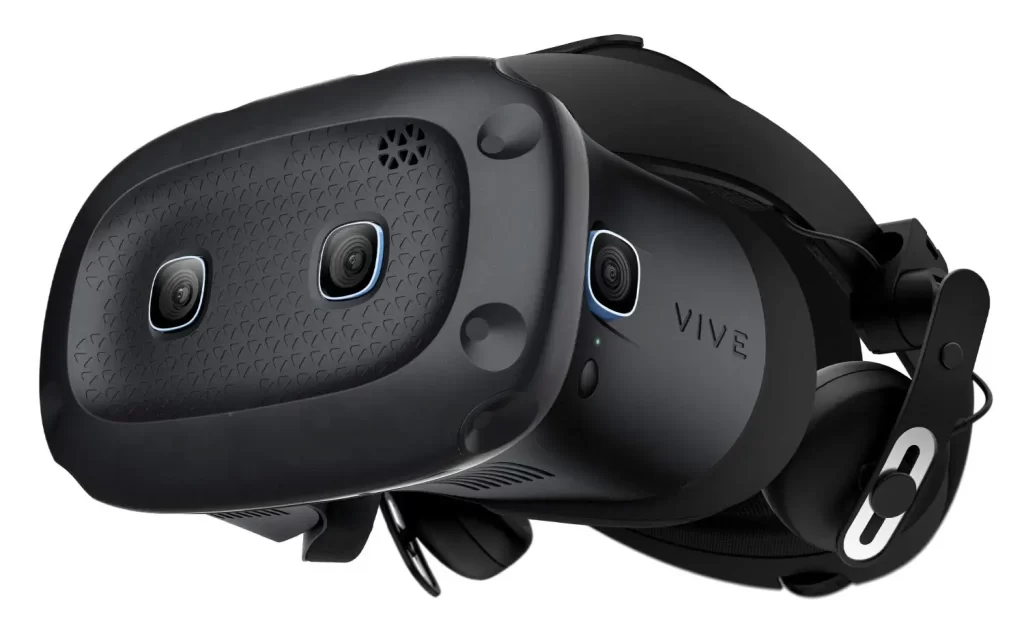
Key Features
- High-Resolution Display: Offers a combined resolution of 2880 x 1700 (1440 x 1700 per eye) for sharp visuals and minimized screen-door effect.
- External Tracking System: Utilizes SteamVR™ Tracking with Lighthouse base stations (sold separately) for precise and reliable movement tracking in large play spaces (up to 100m² with four base stations).
- Flip-Up Design: A unique feature that allows you to easily switch between VR and the real world without taking off the headset entirely.
- Comfortable Design: Adjustable head strap, eye relief dial, and soft padding ensure a comfortable fit for extended VR sessions.
- Wide Compatibility: Works with various VR platforms including SteamVR and HTC’s VIVEPORT Infinity subscription service for VR games and experiences.
- Built-in Headphones: Integrated on-ear headphones deliver immersive audio during gameplay.
- Glasses Friendly: Designed to accommodate most eyeglasses for users who require corrective lenses.
- Easy to Clean: Made with wipeable materials for maintaining headset hygiene.
4. Valve Index: Pushing the Boundaries of VR
Valve Index continues to be a frontrunner in the VR industry. Known for its impressive finger-tracking controllers and high refresh rates, this headset provides a truly immersive experience. Whether you are exploring virtual worlds or engaging in competitive gaming, the Valve Index offers unparalleled responsiveness and clarity. Its wide field of view enhances your peripheral vision, making you feel truly present in the virtual environment.
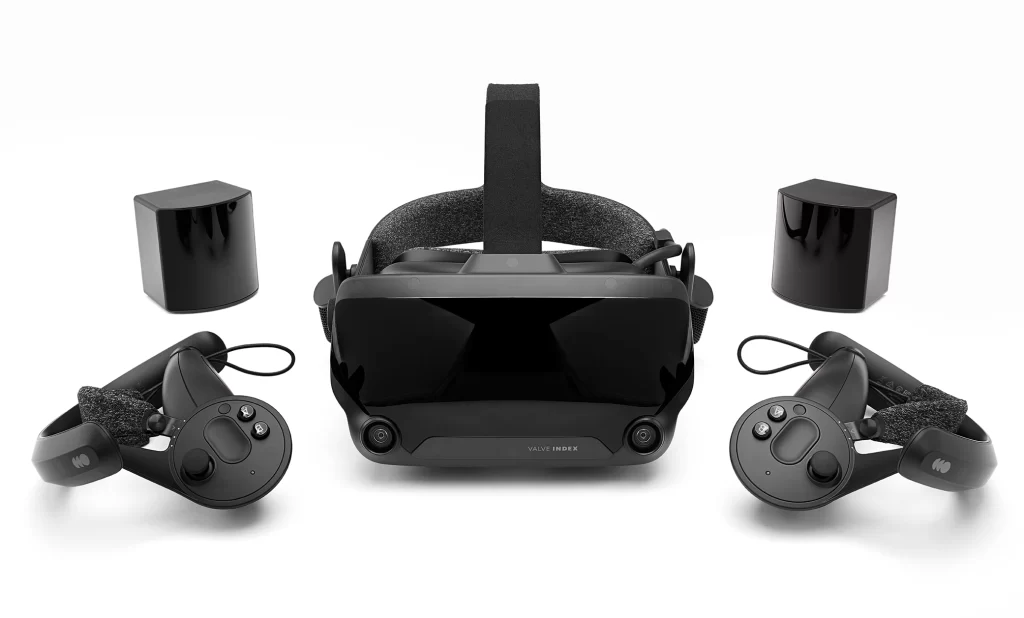
Key features
- Resolution: Dual 1440 x 1600 LCD panels (one per eye) offering a sharp and detailed picture with minimal screen door effect.
- Refresh Rate: Supports multiple refresh rates including 80Hz, 90Hz, 120Hz, and even an experimental 144Hz mode for incredibly smooth visuals and reduced motion sickness.
- Field of View (FOV): Wide 130° FOV for a more natural and immersive experience that fills your vision.
5. Pimax 8KX: Where Resolution Meets Reality
For users seeking the highest visual fidelity, the Pimax 8KX stands tall. As the name suggests, this headset boasts an astonishing 8K resolution, delivering unparalleled clarity and detail. Its wide field of view enhances immersion, and its compatibility with various tracking systems provides flexibility for different setups. The Pimax 8KX is a top choice for VR enthusiasts who prioritize visual fidelity above all else.
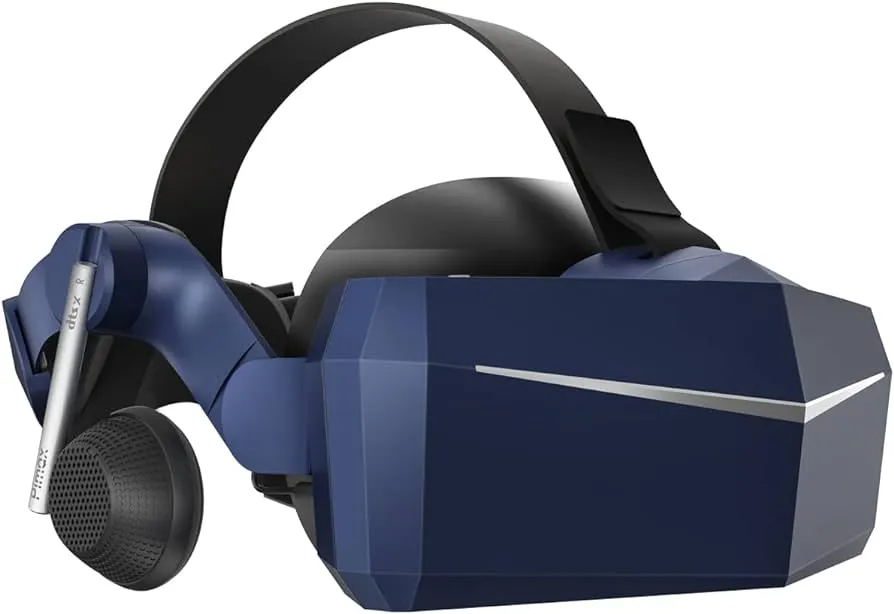
Key Features
- Ultrawide Field of View (FOV): The 8KX boasts a massive 200° FOV, creating a near-panoramic view for unparalleled immersion in VR environments.
- High-Resolution Display: Dual 4K displays (combined 7680 x 2160 resolution) deliver exceptional clarity and detail, bringing virtual worlds to life.
- Multiple Refresh Rates: Supports native refresh rates of 60Hz, 75Hz, and even 90Hz (with compatible graphics cards) for smooth and fluid visuals.
- Adjustable IPD (Interpupillary Distance): Ensures a comfortable and clear view by allowing you to fine-tune the distance between the lenses to match your eye placement.
- SteamVR Tracking Compatibility: Works with both SteamVR 1.0 and 2.0 base stations for accurate positional tracking within the VR space.
- Comfort Design: Features a soft cushion, ergonomic head strap, and nose guard for extended VR sessions with minimized fatigue.
- 3D Spatial Audio: Built-in speakers or a headphone jack provide realistic 3D positional audio for a truly immersive soundscape.
6. Sony PlayStation VR 2: Evolution of Console VR
Building upon the success of its predecessor, the PlayStation VR 2 enhances the console-based VR experience. With improved visuals, enhanced tracking, and a more comfortable design, this headset offers a glimpse into the future of console VR gaming. Its integration with the PlayStation ecosystem ensures a seamless experience, and its lineup of exclusive titles provides unique gaming adventures for PlayStation enthusiasts.
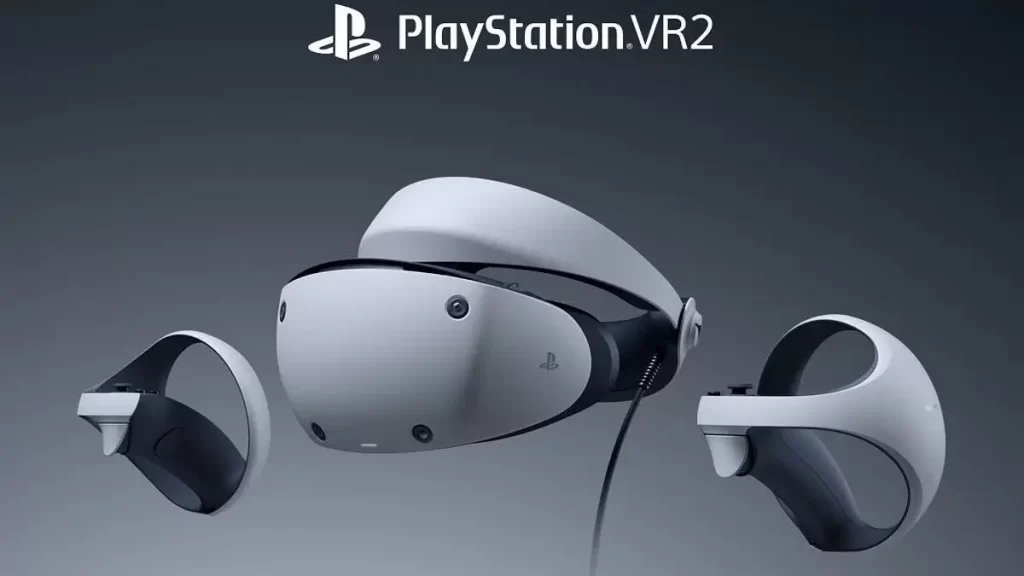
Key Features
- High-fidelity display: Dual OLED panels with “4K” resolution (2000 x 2040 per eye) for sharp visuals, HDR compatibility for wider color range and increased contrast, 90Hz or 120Hz refresh rate for smooth gameplay, and adjustable lens separation for a personalized fit.
- Enhanced immersion: 110-degree field of view for a natural and expansive view, built-in microphone and headphone jack for clear communication and immersive audio, and Tempest 3D AudioTech for dynamic, realistic in-game soundscapes that adapt to your head movements.
- Intuitive PlayStation VR2 Sense controllers: Innovative orb design with finger touch detection for natural hand gestures, haptic feedback and adaptive triggers for realistic in-game sensations, and improved ergonomics for comfortable gameplay.
- Seamless PS5 integration: Single USB Type-C cable connection for easy setup, Cinematic Mode to use the VR headset as a virtual cinema screen for PS5 games and media, and ability to share and broadcast gameplay directly from VR mode.
- Eye tracking (future potential): May enable more intuitive gameplay interactions in future games.
- Vibration feedback on headset: For additional in-game cues.
7. HP Reverb G3: Bridging the Gap Between VR and Reality
The HP Reverb G3 strikes a balance between performance and affordability. With its high-resolution display and comfortable design, this headset is ideal for users looking to explore VR without breaking the bank. It offers a compelling VR experience for gaming, productivity, and virtual collaboration. The Reverb G3 proves that quality VR experiences can be accessible to a wider audience.
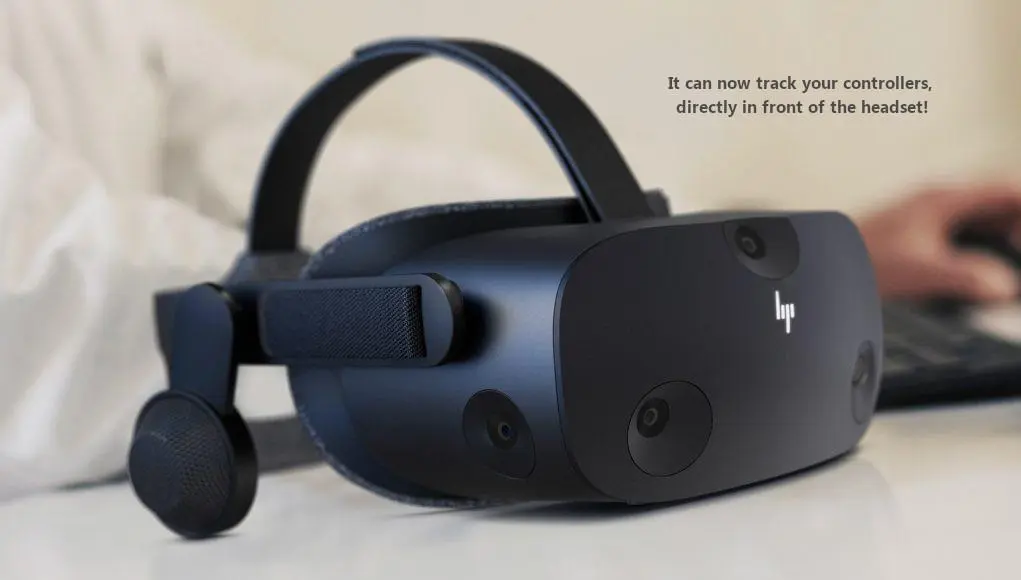
Key features
- High-resolution display (expected): Successor to the HP Reverb G2, the G3 is likely to boast an even higher resolution panel, possibly reaching 4K per eye for sharper visuals and reduced screen door effect.
- Improved refresh rate (expected): The G3 might offer a refresh rate exceeding 90Hz, potentially reaching 120Hz or even higher. This can provide smoother visuals and better responsiveness in fast-paced VR experiences.
- Enhanced tracking (potential): HP could implement improved inside-out tracking technology for more accurate and reliable movement detection within the VR space.
- Wider field of view (potential): An increase in field of view over the G2’s 114 degrees would create a more immersive experience by bringing the virtual world closer to your natural vision.
- Comfort improvements (likely): HP is likely to focus on improved ergonomics for the G3, including lighter weight materials, a better head strap design, and potentially adjustable facial interfaces for a comfortable fit during extended VR sessions.
- Enhanced audio (potential): The G3 might come with integrated speakers with improved sound quality or offer compatibility with higher-fidelity headphones for a more immersive auditory experience.
- PC tethered: As with the prior Reverb models, the G3 is expected to be a PC-connected VR headset, requiring a powerful computer to run VR applications.
Features to Consider When Choosing a Right VR Headset
Choosing the right VR headset can be a thrilling experience, but with so many options available, it’s essential to focus on key features that align with your needs. Here’s a simple guide to help you make an informed decision.
- Display Quality: Opt for a headset with high resolution and pixel density for sharper and more detailed visuals. This ensures a more immersive experience.
- Tracking System: Consider the tracking mechanism. Inside-out tracking means sensors are on the headset, offering more freedom of movement. External sensors offer precise tracking but require setup.
- Comfort and Design: Look for a headset with adjustable straps and cushioning. Comfort is crucial, especially for extended VR sessions. A well-designed headset prevents discomfort.
- Content Library: Check the available games, apps, and experiences. Some VR platforms have a broader selection, ensuring you won’t run out of things to explore.
- Compatibility: Ensure the VR headset is compatible with your device, be it a PC, gaming console, or smartphone. Some headsets are specific to certain platforms.
- Controllers: Evaluate the controllers’ ergonomics and functionality. Intuitive controllers enhance gameplay and interaction within virtual environments.
- Budget: Set a budget beforehand. There are VR options ranging from affordable to premium. Finding a balance between features and cost is key.
In conclusion, the VR landscape in 2024 offers diverse options catering to various preferences, from wireless freedom to affordability. Technology’s continuous evolution promises an even more immersive future. By considering these factors, you can find a headset that fits your budget and delivers an enjoyable experience. With the right VR device, embark on adventures, unleash creativity, and connect in unimaginable ways. Embrace this future, where reality blurs, and possibilities are endless, making your virtual experiences truly extraordinary.
